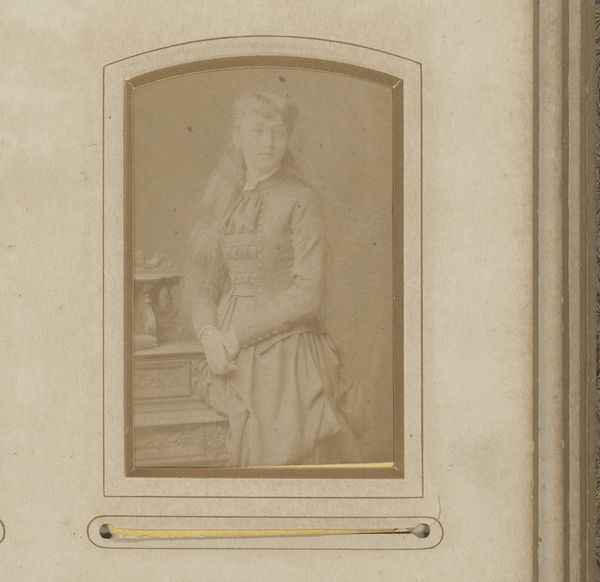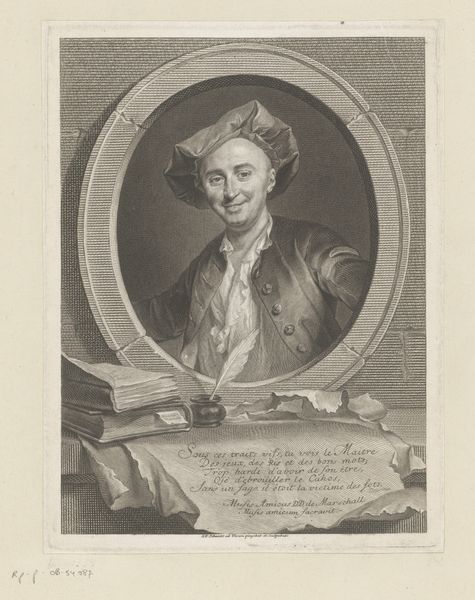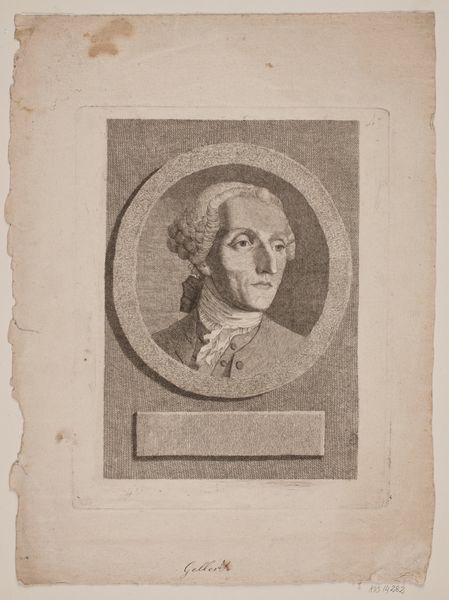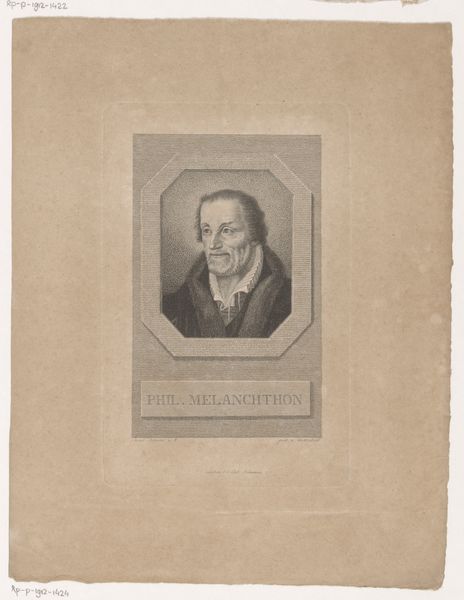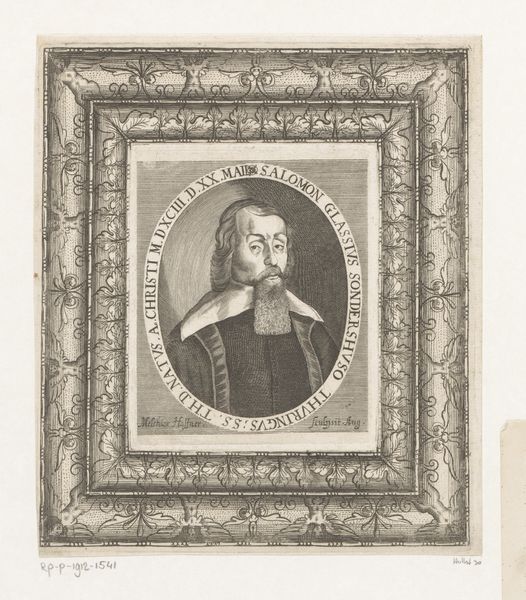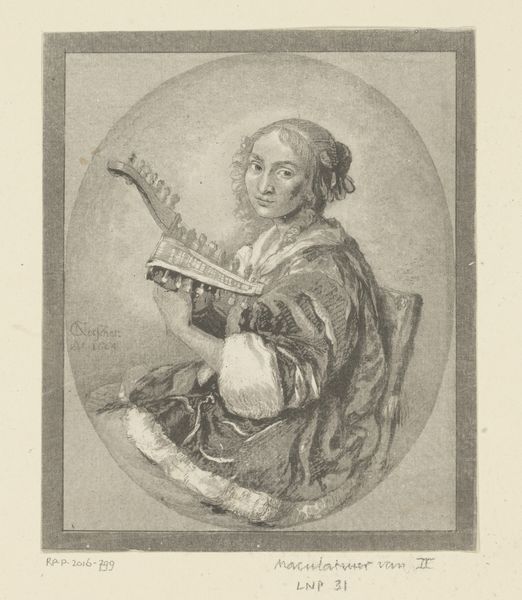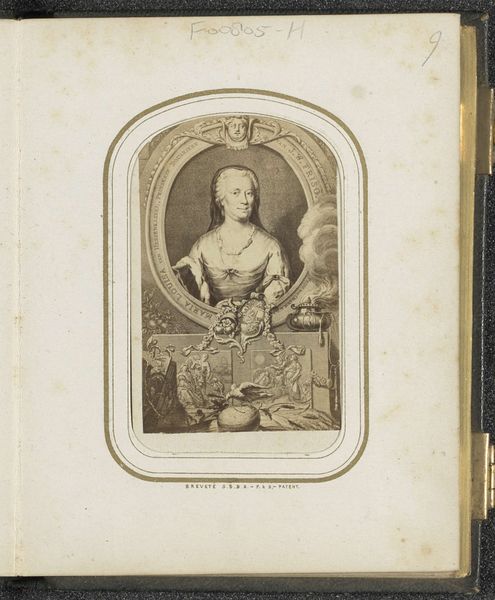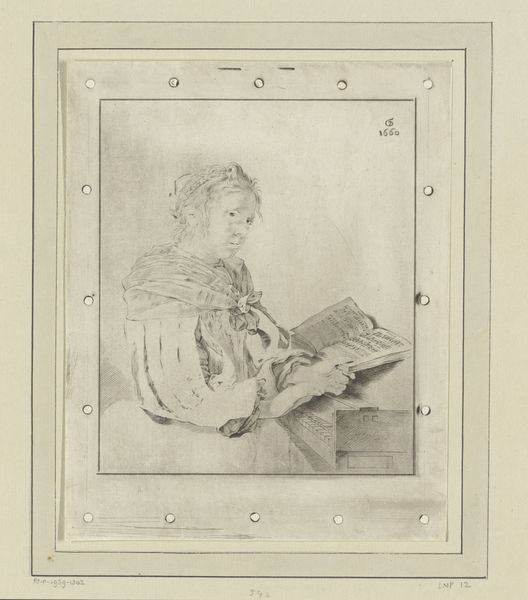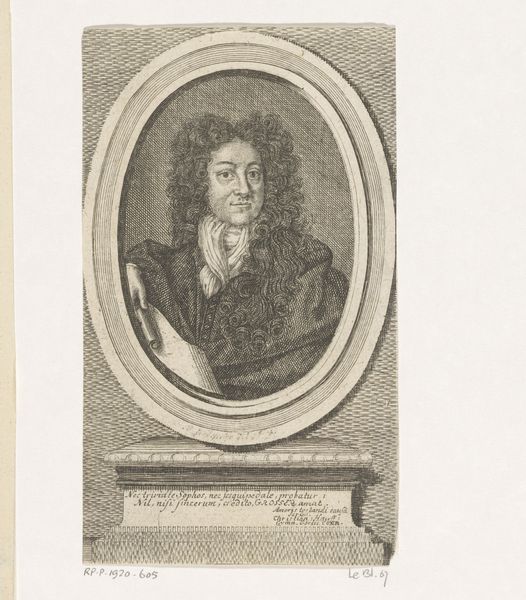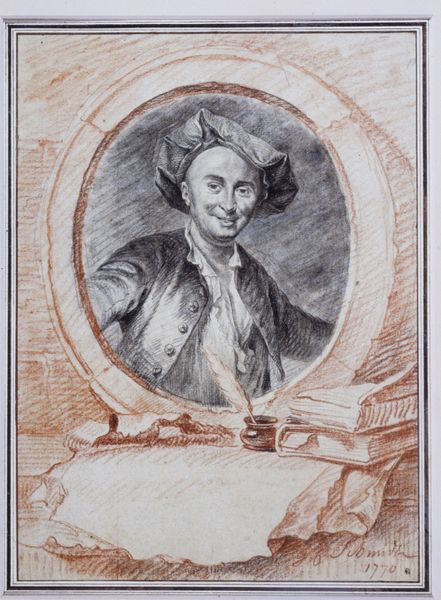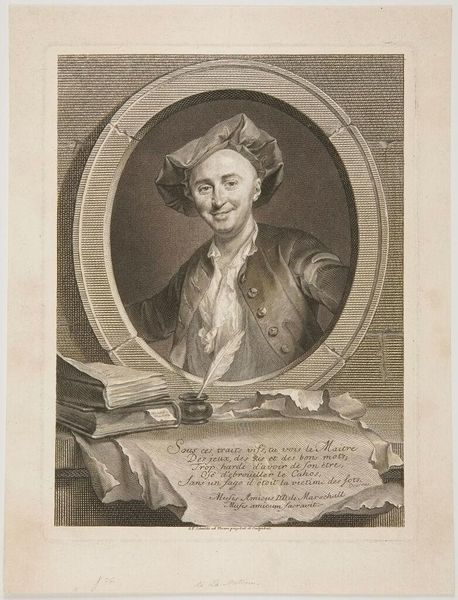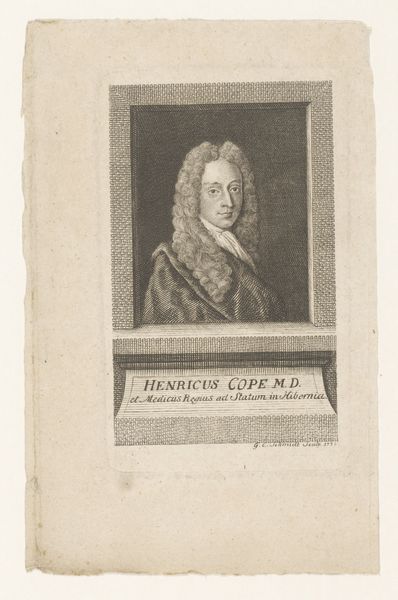
painting, oil-paint
#
portrait
#
baroque
#
painting
#
oil-paint
#
oil painting
#
genre-painting
Dimensions: height 11 cm, width 9.5 cm
Copyright: Rijks Museum: Open Domain
Curator: Here we have "Portrait of Jan Six, Poet and Burgomaster of Amsterdam", believed to have been completed between 1700 and 1732 by Arnoud van Halen. It’s an oil painting, quite intimate in scale. Editor: It gives the impression of a faded memory. The color palette is muted, almost sepia-toned. Curator: Indeed. Van Halen clearly utilizes the conventions of Baroque portraiture but there is, perhaps, something unusual. The texture of the linen and preparation of the oil paint would have played an important role here, especially when thinking of contemporary consumer desire for luxurious portraits among Amsterdam’s elite during that era. Editor: There’s an almost haunting quality to the light. Note how it catches on his hands and illuminates the book he's holding—it certainly guides the eye directly to those points, no? The brushstrokes seem less about precise detail and more about capturing the fleeting essence of Jan Six. Curator: Right. But who exactly was Jan Six? A prominent figure in Amsterdam's Golden Age. He was a patron of the arts, and a close friend to Rembrandt! Van Halen attempts to negotiate Six’s role as a municipal official and poet by choosing to represent him while holding a book. It is almost as though this artistic choice serves to justify this representation for wider circulation to society during this period. Editor: And it certainly allows us, as viewers, to ponder the dichotomy between his public role and perhaps, his private intellectual pursuits. Curator: Ultimately, Arnoud van Halen shows us that labor and materiality combined in certain ways become a means of consolidating Jan Six’s position as an elite individual. Editor: Agreed. Thinking purely from a formalist position, van Halen creates an enigmatic work. The gaze draws the viewer into a personal connection, hinting at the complexities of human character beyond the simple, albeit flattering, likeness of an official. Curator: It’s an important reminder of how we weave production with symbolic and historical weight in a community’s narrative! Editor: It allows for a layered appreciation, connecting past craftsmanship with the lasting allure of personal identity!
Comments
No comments
Be the first to comment and join the conversation on the ultimate creative platform.
